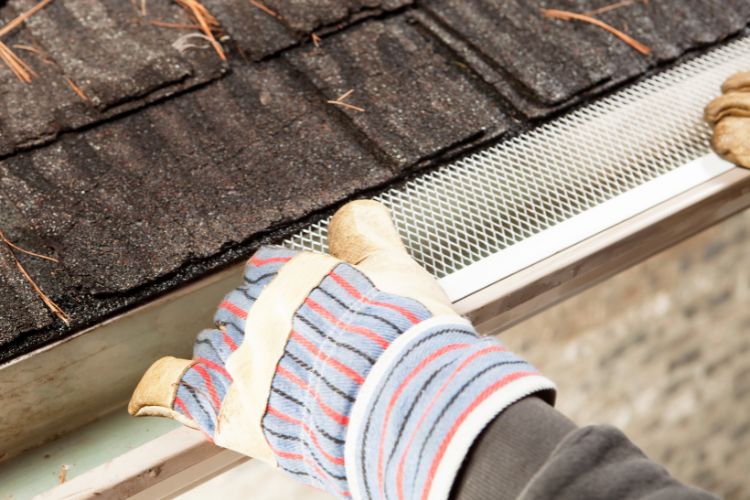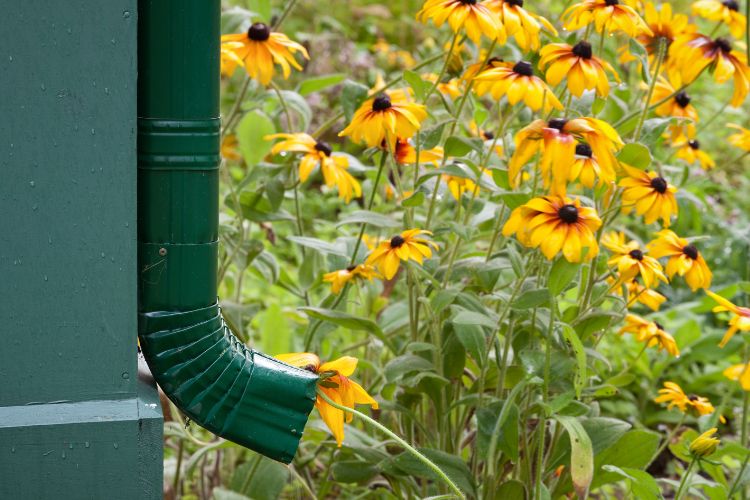
Key Takeaways
- Regular gutter maintenance is crucial to prevent water damage to your Melbourne home.
- Identify signs of gutter disrepair such as leaks, sagging, or blockages to address issues promptly.
- Use the right tools and materials for gutter repair to ensure a long-lasting solution.
- Understand when to repair or replace gutters to save time and money in the long run.
- Follow a step-by-step guide to gutter repair for optimal results and home protection.
Gutter Maintenance Essentials for Melbourne Homeowners
Living in Melbourne, FL, means dealing with a lot of rain, and that’s where your gutters come in. They’re your home’s unsung heroes, guiding water away from your foundation and helping to keep your living space dry and damage-free. But gutters need some love too! Ignoring them can lead to serious problems, so let’s dive into the essentials of keeping your gutters in tip-top shape.
Identifying the Need for Gutter Repair
First things first, how do you know if your gutters need a little TLC? Keep an eye out for these tell-tale signs: water spilling over the sides, gutters pulling away from the roof, or rust and cracks. These are your gutters crying out for help. Spotting these early can save you a bundle down the road.
Tools and Materials for a Successful Gutter Repair Job
Now, let’s gear up! You’ll need a sturdy ladder, gloves, a garden hose, and some basic tools like a screwdriver and pliers. Materials like sealant, patches, and spare gutter parts are also a must. With these in hand, you’re ready to tackle any gutter issue that comes your way.
Addressing Common Gutter Problems in Melbourne
Fixing Leaks and Holes
Leaks and holes in your gutters? No problem. A bit of gutter sealant can work wonders for small leaks. For bigger holes, you’ll want to patch them up with a metal patch that matches your gutter material. Apply the sealant around the patch for a watertight seal.
Reattaching Sagging or Fallen Gutters
Sagging gutters are often due to loose hangers or spikes. Tighten them up or replace them if they’re worn out. If your gutter has fallen, you’ll need to reattach it securely to the fascia board. Make sure it’s properly aligned so water can flow freely.
Now that we’ve covered the basics, let’s roll up our sleeves and get to work on keeping those gutters functioning like new. Remember, a little effort goes a long way in protecting your home from the relentless Melbourne rains.
When gutters are beyond repair, replacing damaged sections is the way to go. This might sound daunting, but it’s doable with some patience. You’ll need to remove the damaged piece, ensuring you don’t damage the surrounding areas. Then, measure the gap and cut a new section of gutter to fit. Secure it in place with gutter screws and seal the edges to prevent leaks. For more detailed instructions, refer to our DIY gutter installation guide for Melbourne homeowners.
Ensuring Proper Gutter Slope and Alignment
Here’s a pro tip: your gutters need a slight slope towards the downspouts for water to flow correctly. For every 10 feet of gutter, you want about a quarter-inch of slope. Use a level to check the slope and adjust the hangers accordingly. This simple step prevents standing water and the damage it can cause.
Pro Tips for Seamless Gutter Installation
Seamless gutters are a fantastic choice because they minimize leaks. If you’re considering an upgrade, always measure your house perimeter at the roofline where the gutters will go. Then, choose a material that stands up to Melbourne’s weather—aluminum is a popular, durable option.
Choosing the Right Type of Gutters for Your Home
When selecting gutters, consider both function and form. Aluminum and vinyl gutters are lightweight and rust-resistant, while copper and steel are sturdy and can handle more weight. Think about the rainfall in Melbourne and the style of your home to make the best choice.
Measuring and Planning for Optimal Performance
Before you install or repair, measure twice so you only have to install once. Plan the layout of the gutters and downspouts, ensuring you have enough materials. Don’t forget to account for the downspout outlets when measuring the lengths of the gutter runs.
Example: If your home’s roofline is 60 feet long, you’ll need at least three downspouts to handle the water flow effectively.
Securing Gutters with the Correct Hardware
To prevent sagging and pulling away, use gutter hangers or brackets every 2 feet along the gutter length. This might seem like overkill, but in Melbourne’s heavy rains, it’s better to be safe than sorry. Secure the hangers into the fascia board for a firm hold.
The Importance of Proper Downspout Placement
Downspouts are crucial for directing water away from your home’s foundation. Place them at every corner and every 30 to 40 feet along the gutter run. Ensure they extend at least 5 feet from your home to prevent erosion and water damage.
Matchers and Hangers: The Gutter Support System
Understanding the different types of gutter hangers and how they work is key to a successful installation. The most common types are spike and ferrule, hidden hangers, and wrap-around hangers. Each has its own strengths and installation methods.
Different Types of Gutter Hangers
Spike and ferrule hangers are the old-school method and involve driving a long spike through the gutter into the fascia. Hidden hangers are tucked inside the gutter and screwed into the fascia, offering a cleaner look. Wrap-around hangers clip over the front and are screwed into the fascia, providing strong support.
Installing Gutter Hangers for Maximum Support
For the best support, install gutter hangers close to the joints and at regular intervals. Hidden hangers are particularly effective in Melbourne’s climate as they’re less likely to corrode or come loose over time.
Tip: When installing hangers, ensure they’re tight against the fascia and the gutter is seated properly within the hanger to prevent movement and sagging.
Matching Gutter Colors to Your Home’s Aesthetic
Function is important, but so is form. Choose gutter colors that complement your home’s exterior for a seamless look. Most gutters come in a range of colors, or you can paint them for a custom match.
Long-Term Gutter Maintenance and Care
Lastly, let’s talk maintenance. Regular cleaning is essential, especially after storms or during fall when leaves pile up. Use a garden hose to flush out small debris, and consider installing gutter guards to keep leaves and twigs out.
Regular Cleaning Schedule and Techniques
Set a schedule to clean your gutters at least twice a year—once in the spring and once in the fall. Use a ladder, gloves, and a scoop or garden trowel to remove debris, and always follow ladder safety guidelines. A hose with a high-pressure nozzle can help clear out clogs in the downspouts.
Long-Term Gutter Maintenance and Care
For your gutters to continue protecting your Melbourne home from water damage, they require ongoing care. It’s not just about fixing problems as they arise; it’s about taking proactive steps to prevent issues from developing in the first place.
Regular Cleaning Schedule and Techniques
Regular cleaning is the backbone of gutter maintenance. At least twice a year, haul out the ladder and get your hands dirty. Scoop out leaves, twigs, and debris, and finish off by flushing the gutters with a garden hose. This routine maintenance can prevent blockages that lead to water damage.
Installing Gutter Guards for Debris Prevention
Gutter guards are a homeowner’s best friend. They keep leaves and larger debris from clogging up your gutters, saving you time and effort on cleaning. They come in various styles, from mesh screens to solid covers, and they’re a wise investment for any Melbourne home.
But remember, even the best gutter guards aren’t foolproof; you’ll still need to check for pine needles, seeds, and other small debris that can sneak through.
Annual Gutter Inspection Checklist
Once a year, give your gutters a thorough inspection. Look for:
- Signs of rust or corrosion
- Cracks or holes
- Loose or missing fasteners
- Sagging sections
- Proper alignment and slope
- Efficient downspout water flow
Addressing these issues early can prevent costly repairs in the future.
Example: During your annual inspection, you might find a small rust spot. It’s best to tackle it now with a bit of sanding and sealant before it becomes a gaping hole.
Keep a checklist or a diary of your inspections and maintenance work. This can help you track the health of your gutters and make informed decisions about repairs and replacements.
FAQ
Now, let’s tackle some common questions Melbourne homeowners have about gutter care.
How Often Should Gutters be Replaced in Melbourne, FL?
Most gutters last about 20 years, but this varies based on material and weather exposure. In Melbourne, with its heavy rains and potential for storms, you might need to replace them more frequently. Inspect your gutters annually to gauge their condition and understand the importance of proper gutter maintenance.
Aluminum gutters, for instance, can last longer than galvanized steel ones in coastal areas due to their resistance to rust.
Can I Repair Gutters Myself or Should I Hire a Professional?
Simple repairs like sealing a leak or cleaning out debris are manageable DIY tasks. But for more complex issues, like replacing sections of gutter or re-sloping the system, you might want to call in a pro. Safety is paramount, and professionals have the expertise and equipment to do the job right.
Plus, they can spot potential problems you might miss and offer solutions to prevent future damage.
Tip: If you’re not comfortable on a ladder or unsure about a repair, there’s no shame in hiring a professional. It’s better to invest in quality workmanship than risk a fall or a botched job.
What are the Tell-Tale Signs that My Gutters Need Repair?
Signs that your gutters need attention include:
- Water spilling over the sides during rain
- Sagging or detached sections
- Visible holes or cracks
- Rust spots or peeling paint
- Pools of water or signs of erosion near your foundation
If you notice any of these, it’s time to get on that ladder or call a professional.
What Is the Best Type of Gutter Material for Melbourne’s Climate?
In Melbourne’s humid climate, corrosion resistance is key. Aluminum gutters are a popular choice because they don’t rust and can handle the heavy rains well. Vinyl gutters are also rust-resistant and easy to install, but they may not hold up as well in extreme weather.
Stainless steel and copper are more expensive options but offer durability and a distinctive look.
How Can I Prevent Gutter Damage During Hurricane Season?
Hurricane season in Melbourne calls for extra precautions. Make sure your gutters are securely fastened and free of debris. Consider installing hurricane straps for added stability, and inspect your gutters after any storm for damage.
Remember, well-maintained gutters are more likely to withstand the high winds and heavy rainfall that hurricanes bring.





